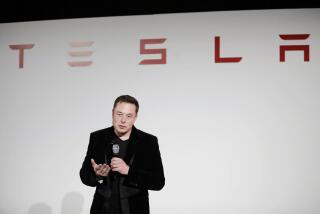Commissioner Gary Bettman says owners unanimous in support of lockout
- Share via
Gary Bettman didn’t require a secret ballot — or any kind of vote, for that matter — to receive an authorization to lock out NHL players if there is not a new collective bargaining agreement in place when the current one expires at 8:59 p.m. Pacific time Saturday.
However, the longtime NHL commissioner, perhaps anticipating media questions about owner unanimity, said he asked for such a motion from the Board of Governors.
“A [show of hands] vote was taken and it was unanimous,” said Bettman said Thursday in a media briefing in New York.
This would be the third lockout under Bettman’s tenure, but it is the first time he has gone head to head in labor talks with Donald Fehr, the executive director of the NHL Players’ Assn. Training camps are scheduled to open Sept. 21.
Hours before Bettman’s news conference the NHLPA had its turn, having finished two days of meetings. Fehr was flanked by the league’s stars and 283 players were there for the proceedings.
One of them was the Pittsburgh Penguins’ Sidney Crosby.
“If you just look at the key principles of everything, we’re showing that we’re willing to move and that we’re willing to sacrifice things with our proposal,” Crosby told reporters in New York. “With that, both sides have room to grow and continue to have success.
“If you were to look at their proposal, it’s not really the same type of feeling. You look at hard numbers and there’s not really a ton of incentives for players. It doesn’t seem to address the key issues we keep hearing are key issues.”
Presumably there will be at least one more tweak of proposals before the crucial moment Saturday. The last move by the owners puts the players’ share of hockey-related revenue from a starting point of 49% in Year 1 to 47% by Year 6. Last season, the players earned 57% of revenue. And there is a continued conflict over anticipated rate of revenue increases.
“They are asking for a guarantee in dollars and they are giving you percentages that they think it might be,” Bettman. “They used a 7.1% assumption rate in terms of the growth of revenues, which far exceeds what is realistic.”
twitter.com/reallisa
More to Read
Go beyond the scoreboard
Get the latest on L.A.'s teams in the daily Sports Report newsletter.
You may occasionally receive promotional content from the Los Angeles Times.











